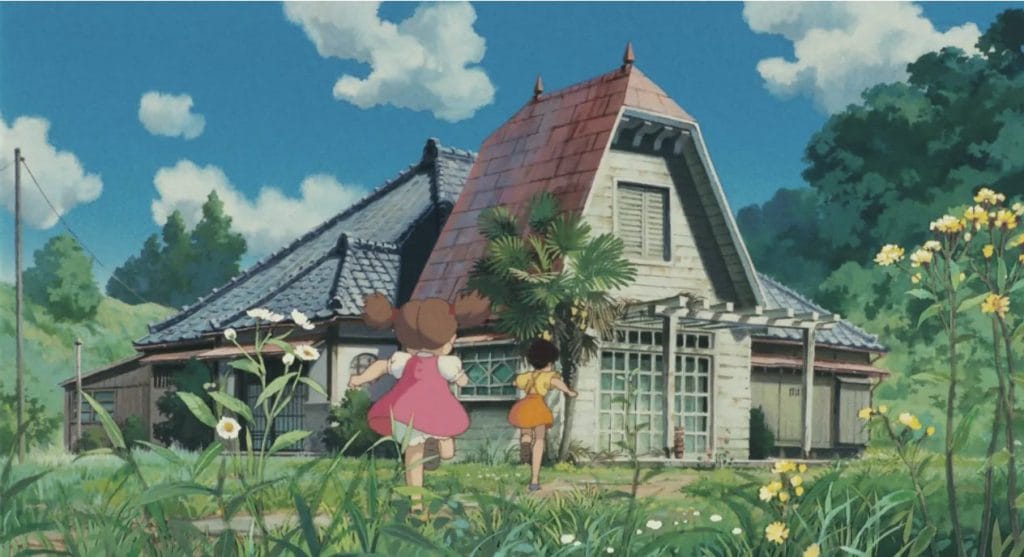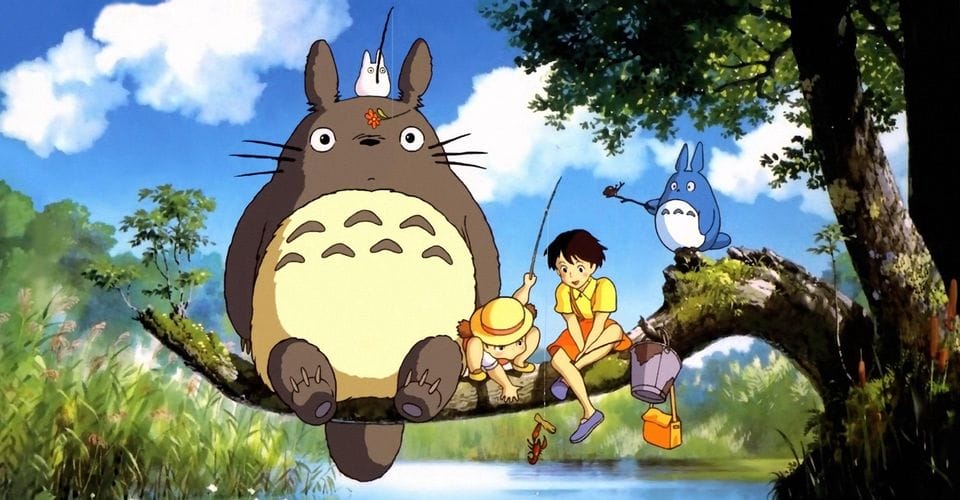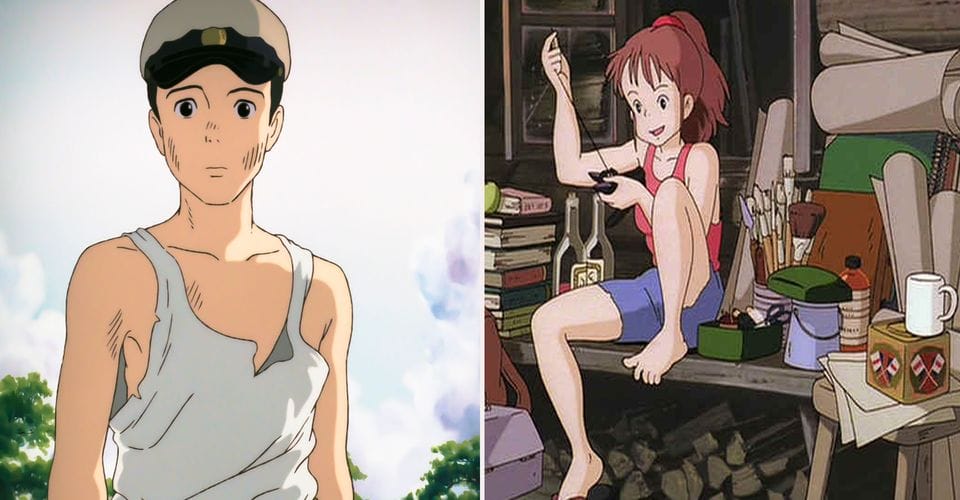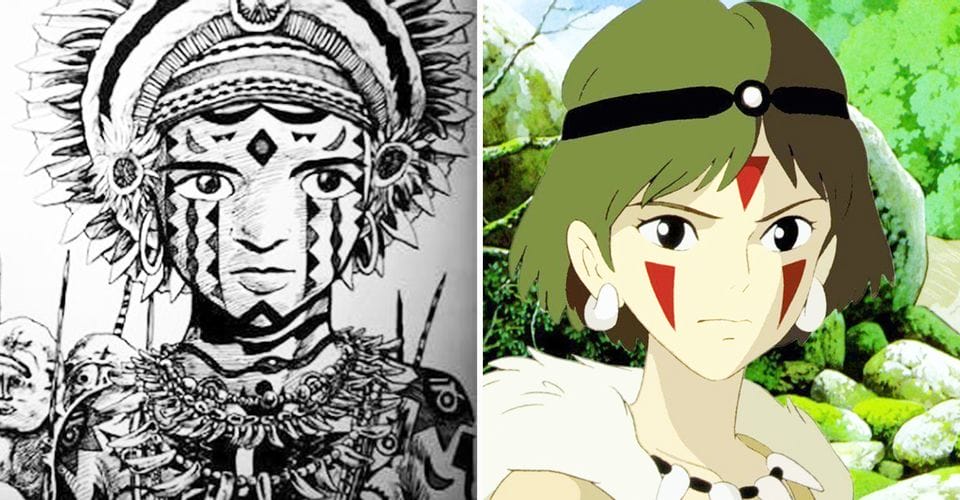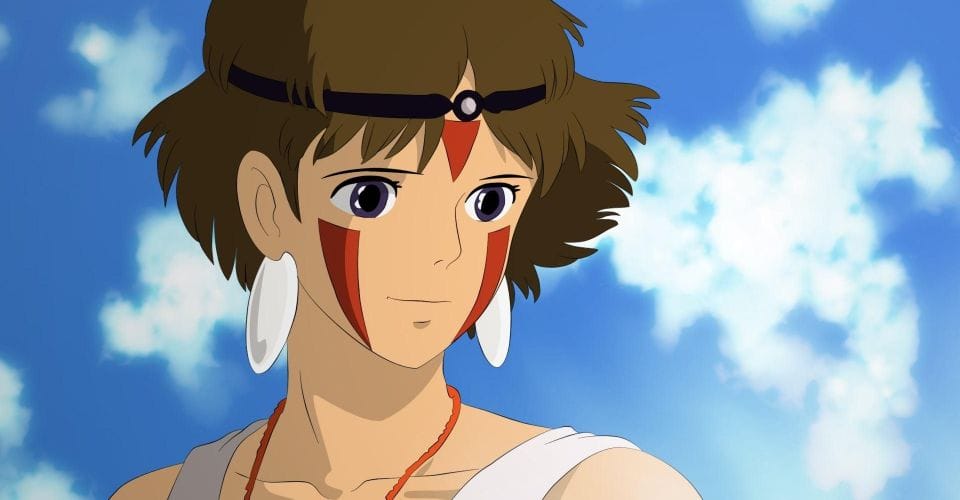All 25 Studio Ghibli Films, Ranked
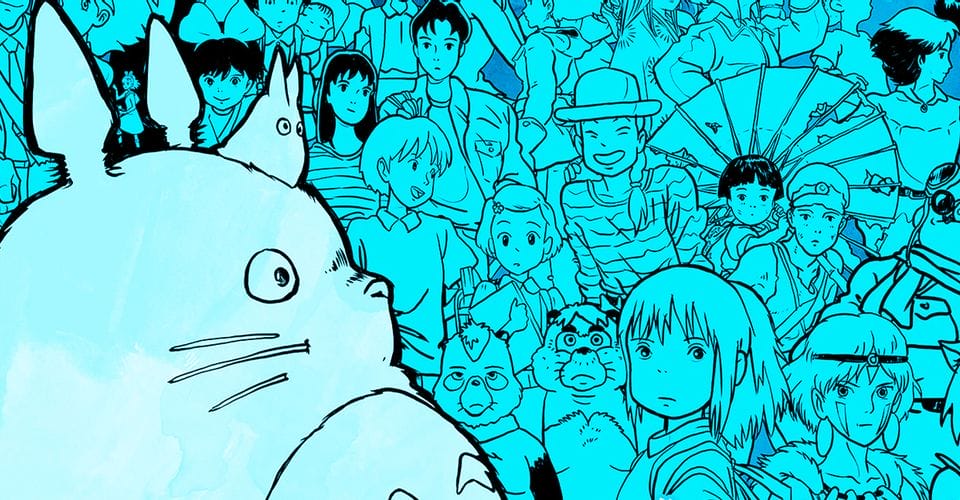
Studio Ghibli is perhaps the greatest animation studio in the world. So which of the studio’s films is its best?
In 2014, Studio Ghibli laid off its animation staff and entered a period of dormancy. The two directors who defined the studio’s output, Hayao Miyazaki and Isao Takahata, had retired, and without the certain box office success of new Miyazaki movies, Ghibli couldn’t afford to keep making fully-animated features. The studio wasn’t gone entirely; it produced co-productions with other studios while Miyazaki still worked on short films for exclusive showings at the Ghibli Museum in Tokyo. Takahata passed away on April 5, 2018, but sometime in the next couple of years, there will be a new Hayao Miyazaki movie titled How Do We Live? Seems the master just can’t stay retired for long.
Studio Ghibli is perhaps the greatest animation studio in the world (and before you say Pixar, note many people at Pixar will themselves say Ghibli’s the best). So which of the studio’s films is the best? This list ranks all 21 official Studio Ghibli animated features, as well as one pre-Ghibli film since incorporated into the studio’s library, one co-production, one documentary and one short film. This doesn’t touch upon the studio’s video game and television work, nor does it include the short films never officially released in the United States (some shorts can only be seen at the Ghibli Museum, which everyone must try to visit — Boro the Caterpillar is so good). So many of these films are masterpieces, and you could make a serious argument that all the entries in the top 10 could be deserving of the number one spot. Even the ones that aren’t so successful are still mostly worthwhile works of animation artistry.
25. TALES FROM EARTHSEA

The one Ghibli ranking practically everyone agrees on is that Tales from Earthsea is not the studio’s best. You feel bad for Goro Miyazaki, being dragged in to direct a huge movie with zero experience while also being dragged by his cranky, more experienced father. That sympathy doesn’t make this bad movie any better, though.
The second disastrous attempt to bring Ursula K. Le Guin’s Earthsea novels to the screen, Tales from Earthsea upset Le Guin and her fans with its major changes from the source material while confusing and boring everyone else. The animation is good, but nothing else about this movie is. The simplistic “good vs. evil” story, with lazily cartoonish villains, lacks the depth and nuance you expect from Ghibli.
24. OCEAN WAVES

Ocean Waves isn’t actively bad, just utterly unmemorable. A made-for-TV movie done on a lower budget than usual, its lack of ambition is understandable, but doesn’t make for a particularly interesting experience. The story is soap opera melodrama (one of the characters even describes it as such), inoffensive yet uncompelling.
The animation quality is good for a TV movie in the ’90s, yet there’s none of the visual creativity you find even in the other more realistic Ghibli movies. This was the first time a director other than Miyazaki or Takahata directed a Ghibli film, and you understand why Tomomi Mochizuki never made a second film at the studio.
23. GHIBLIES: EPISODE 2

Originally released in Japan attached to The Cat Returns, Ghiblies: Episode 2 is the only one of the studio’s short films to get an official American release (attached to the DVD/Blu-Ray of Ocean Waves). Jumping between multiple stories and styles over the course of 25 minutes, it portrays the life of a bunch of fictional animators based on Ghibli employees.
The short’s scattershot nature and inconsistent animation quality make it hard to recommend for all but the most hardcore of Ghibli nerds. If you have ever secretly wished to watch a pig-nosed caricature of Hayao Miyazaki breakdance, however, it’s the sort of obscurity you’ll find some amusement from.
22. POM POKO

Okay, let’s get it out of the way: yes, the dub says the tanuki (raccoon dogs) transform using their magic “pouches,” but we all know what they’re really using. Now that awkwardness is out of the way, let’s discuss the actual quality of this Takahata film: it’s not good! Interesting, at parts even inspired, but mostly just not good!
The big issue is that this feels like a first draft that could really have used revisions. The idea of the tanuki slowly losing their identity as they spy on and assimilate with the humans is an interesting conflict, and the “ghost parade” sequence is amazing, but the pacing’s terrible, the characterization weak, the tone wildly offputting and the message preachy.
21. THE RED TURTLE

Co-produced by Ghibli but animated in France by Dutch filmmaker Michaël Dudok de Wit, The Red Turtle is astonishingly beautiful, frequently boring and fundamentally broken on a conceptual level. Nominated for the 2016 Best Animated Feature Oscar, it’s worth praising for its gorgeous animation and the skillful way it tells its story without dialogue.
The story itself, however, is problematic. This sparse, minimalist fantasy is designed as a fable, but one with a very questionable message. While it works when it’s focused on man’s relationship with nature, its views on man’s relationship with women is incredibly uncomfortable, turning into an apologia for men who commit violence towards women.
20. THE CAT RETURNS

The only feature-length sequel/spin-off movie in the Ghibli library, Hiroyuki Morita’s The Cat Returns is essentially an adaptation of the fantasy novel written in Whisper of the Heart. The film is a cute 75 minute diversion, but ultimately pretty forgettable compared to other Ghibli movies.
The art style is notably different from the traditional Ghibli style, more angular and closer to the more typically “anime” style of the manga-ka Aoi Hiiragi. Storywise, it feels closer to a standard Disney fairy tale than the usual Ghibli complexity. It’s a fine movie for kids to enjoy, and of course, one in which cat lovers will also find much to appreciate.
19. MY NEIGHBORS THE YAMADAS

My Neighbors the Yamadas is a very good piece of animation that simply has no business being a feature film. There’s no overarching plot or even character development in this gag manga adaptation, just assorted comedic vignettes about family life. The bits are funny, thoughtful and appealingly animated, and in 11 minute chunks they’d be impossible to dislike. Over 104 minutes, though, they get boring.
It doesn’t help that the most visually stunning part of the movie, a fantastic visualization of a wedding speech, happens in the first 10 minutes and the movie never reaches the same heights after that. Takahata deserves praise for the unique watercolor-style animation, though he’d work that same style to greater opulence in his next (and final) film.
18. FROM UP ON POPPY HILL

Goro Miyazaki’s second film is certainly an improvement from his first. Having his dad co-write the script probably helped a lot. Based on ’80s manga set in the ’60s, From Up on Poppy Hill‘s best quality is its nostalgic sense of place. The Ghibli animators bring the Yokohama seaside to vibrant life. The subplot about student activists saving their clubhouse from demolition is also done well.
The main relationship drama is less exciting. It’s not dull like Ocean Waves, but Umi is one of the less well-defined female leads in the Ghibli library. The movie also touches on some “scandalous” material, which explains why Disney passed on releasing this one.
17. WHISPER OF THE HEART

Yoshifumi Kondo, a top animator at Ghibli, was set to be the successsor to Miyazaki and Takahata. Sadly, he passed away in 1998 from overworking, having only completed one film. That film, Whisper of the Heart, is one of the studio’s more low-key realistic romances, though it occasionally goes into flights of fantasy in protagonist Shizuku’s imaginative writing.
This is a sweet coming of age movie, with a focus on how young people can nurture artistic talents. It’s slow-paced, but manages to keep your attention throughout. Note: one subplot involves translating the John Denver song “Take Me Home, Country Roads” into Japanese, which doesn’t really work in the English dub.
16. ONLY YESTERDAY

Released in 1991 in Japan, Only Yesterday didn’t receive an American release (aside from one airing on TCM) until 2016, when GKIDS released it. Disney’s official excuse for not releasing it was the discussion of menstruation, but even beyond that, this is one of the harder Ghibli movies to sell to the family market. It’s a quiet, slow-paced drama about a twenty-something reflecting on her childhood that would likely bore most kids.
For those old enough to relate to the film’s protagonist, though, Only Yesterday is quite beautiful and insightful. This isn’t a story that necessarily needed to be animated, but Takahata’s visual filmmaking justifies the decision to animate this: while the present is full and lush, the past is softer and impressionistic.
15. WHEN MARNIE WAS THERE

In 2014, before Miyazaki unretired again, When Marnie Was There was to be the final feature animated at Studio Ghibli (2016’s The Red Turtle was produced but not animated there). Despite that historic status and an Academy Award nomination, Hiromasa Yonebayashi’s second feature is still one of the lesser known Ghibli films, but one that deserves being sought out.
Based on Joan G. Robinson’s classic British novel, the film is a sensitive story about the friendship between an orphan with social anxiety and a mysterious ghost. The big plot twist ultimately makes the film less groundbreaking than it seemed it might be early on, but it will still bring you to tears.
14. THE KINGDOM OF DREAMS AND MADNESS

If you’ve seen the memes where Miyazaki allegedly claims “anime was a mistake,” you’ve probably seen a mistranslated scene from this documentary about the making of The Wind Rises and The Tale of the Princess Kaguya. While Miyazaki never says those exact words, though, the stuff he has to say about anime, art and society at large isn’t much kinder.
Miyazaki himself is a larger-than-life character, a comically morose and cynical curmudgeon who’s somehow responsible for some the most uplifting family movies ever made. The Kingdom of Dreams and Madness is a must-see for anyone who wants to better understand this artist, especially if you want to understand his struggles making The Wind Rises.
13. HOWL’S MOVING CASTLE

Even the worst Hayao Miyazaki film is still better than around half the films on this list and at least 90% of other movies. The Oscar-nominated Howl’s Moving Castle is supposedly an adaptation of Diana Wynnne Jones’ novel, but the plot becomes completely different midway through. Miyazaki got sidetracked by a subplot inspired by his anger about the Iraq War.
What it lacks in narrative structure, though, it makes up for with vibrant characters and breathtaking creativity. Sophie is a wonderful protagonist, the way her age changes based on her mood making for some great character animation. The castle itself is a marvelous invention, one of the best uses of CG in a 2D-animated film.
12. THE SECRET WORLD OF ARRIETTY

The highest-grossing Ghibli film at the American box office (admittedly not the most impressive record), The Secret World of Arrietty was co-written by Hayao Miyazaki but was the directorial debut of Hiromasa Yonebayashi. Yonebayashi’s as strong a successor to Miyazaki as you can find. After leaving Ghibli, he founded Studio Ponoc with other ex-Ghibli artists.
For now, his first film is still his best. Based on the classic Borrowers books, Arrietty has a lot of fun with scale, presenting just how dangerous the world would be if you were six inches tall. More than that, the movie’s a powerfully emotional story about a child dealing with life-threatening illness (the dub ends on a more optimistic note than the ambiguous sub).
11. PONYO

Ponyo‘s defining quality, for good and ill, is that it’s a movie for five-year-olds envisioned as if a five-year-old wrote it. Five-year-olds’ imaginations are pretty gosh-darn insane, and Miyazaki is so good at tapping into that insanity, consistency and comprehension be damned, that the resulting film is delightful if occasionally befuddling for adults.
If there’s any deeper layers to Ponyo, it’s in its portrayals of parenthood. Hayao made the movie partially as an apology to Goro, and much of the film is about how kids deal with absent or eccentric parents. Mostly, though, Ponyo is content to be astonishing, almost painfully cute eye and ear candy.
10. THE WIND RISES

Even as Miyazaki leaves retirement, it’s hard to imagine a bolder closing statement on his career than The Wind Rises. This realistic historical biopic of a WWII-era airplane designer is not what you’d expect from the normally family-friendly Miyazaki, but it’s also a film only he could make, a deeply depressing meditation on the existential horrors of being an artist.
It’s not a film you’ll want to rewatch as much as his other, more fun movies, but it’s also one that’s hard to stop thinking about once you’ve seen it. The movie’s especially powerful in light of seeing Kingdom of Dreams and Madness and knowing what a struggle it was to get this made even in toned-down form. Frozen robbed this at the Oscars!
9. MY NEIGHBOR TOTORO

If you first saw My Neighbor Totoro as a young kid or the parent of a young kid, there’s a good chance you might rank it even higher on this list. This iconic classic stands out for how it portrays the way kids experience the world. There’s not much happening for much of the runtime beyond experiencing the wonder of nature, yet it makes this experience the coolest thing in the world, even when Totoro is nowhere to be seen.
Of course, when Totoro is on-screen, you instantly understand why the big guy became Ghibli’s mascot and one of the most beloved characters in all of Japan. The drama with the mother’s illness provides just enough emotional stakes in this otherwise chilled-out movie.
8. CASTLE IN THE SKY

Castle in the Sky (titled Laputa in Japan because Miyazaki read Gulliver’s Travels without knowing Spanish) is the closest Ghibli has come to making a classic Spielbergian blockbuster. It’s a simple, straightforward adventure story, with gunfights, chases, robots, magic and one of the only truly evil villains in the studio’s filmography. It’s a pure blast of entertainment.
As you’d expect from Miyazaki, the animation is incredible, and he directs in a way that really lets you appreciate the beauty. It’s an exciting movie, but not a hyperactive one. The characters are great; Pazu and Sheeta make equally compelling co-leads while Captain Dola and her pirate gang are hilarious. Miyazaki works in his environmentalist message in an appropriate way.
7. PRINCESS MONONOKE

The first of Miyazaki’s numerous “final films”, Princess Mononoke broke box office records in Japan only to be unceremoniously dumped in limited release in America by Miramax (there’s an alternate universe wherein Harvey Weinstein goes ahead with censoring Mononoke and Miyazaki responds by finishing him with a samurai sword). Though few saw it here initially, those who saw it wouldn’t forget it.
This violent environmentalist epic is noteworthy for its moral complexity. Eboshi, the leader of the humans, is a sensitive, caring woman who just happens to be completely wrong waging war against the nature gods. The gods, and their adopted human “princess” San, are beyond the judgment of human morality. Mediator Ashitaka is somewhat bland in comparison, but still a compelling hero.
6. NAUSICAA OF THE VALLEY OF THE WIND

Nausicaa of the Valley of the Wind is the film that started it all. Technically this was a Topcraft production pre-Ghibli, but it’s retroactively considered the first Ghibli film. Miyazaki’s first film based on his own story (he previously directed the Lupin III movie The Castle of Cagliostro) establishes all of his thematic obsessions: the wonder of flight, the strength of women, the horror of war, the power of nature.
The Nausicaa manga kept going after the release of the anime, developing a deeper story, but that’s no knock on the anime. This is a gorgeous movie presenting a rich post-apocalyptic mythology and an amazing heroine. If you think you could never feel emotions for giant insect monsters, watch Nausicaa and your mind will change.
5. THE TALE OF THE PRINCESS KAGUYA

The final film of the dearly missed Isao Takahata is an artistic masterpiece unlike anything else you’ve seen. Takahata developed the animation technology for My Neighbors the Yamadas, but The Tale of the Princess Kaguya takes it to the next level. This looks like an ink painting brought to life, the brushstrokes used to heighten a wide range of emotions.
This adaptation of a legend dating back to the 10th century will certainly give your emotions a work-out. At turns, it’s cute, wonderous, surreal and brutally depressing. While Takahata’s wild tonal experiments didn’t always work (see Pom Poko), all his gambles pay off in this stunning ode to the beauty and suffering of life on earth.
4. GRAVE OF THE FIREFLIES

If the end of Kaguya wasn’t sad enough, Takahata made a film even sadder than that… and pretty much every other movie in existence. Grave of the Fireflies is the last Ghibli movie you’d want to show your kids, despite its inexplicable double-feature pairing with My Neighbor Totoro in 1988.
For older viewers with tissues at hand, this is the type of film that expands your perception of what animation can do. This adaptation of a semi-autobiographical story about siblings struggling to survive the WWII fire-bombings isn’t a film one easily rewatches, but it’s absolutely worth experiencing. Amidst all the horror, there’s a lot of poetry and humanity to be found here.
3. KIKI’S DELIVERY SERVICE

Kiki’s Delivery Service is similar to My Neighbor Totoro as a lighthearted fantasy slice-of-life movie safe to show even the youngest of kids. While Totoro is directly about the concerns of young kids, though, Kiki is focused on the transition between childhood and adulthood. Kiki the witch is 13 when she leaves home, but anyone in their teens or 20s still figuring out independent life will relate to this movie.
This is pretty much the ultimate sick day movie, something that will just make you feel good about life and motivate you to get through any rut. It should be noted that while the dub isn’t as accurate a translation as other Ghibli dubs, Phil Hartman’s performance as Jiji the cat is absolutely wonderful.
2. PORCO ROSSO

Marco, the Italian fighter pilot who chooses to transform into a pig in Porco Rosso, might be the single most interesting character in all of Miyazaki’s movies. You can attribute this to the fact he’s the character most like Miyazaki himself. Miyazaki might restrain his curmudgeonliness when making family movies, but with Porco Rosso, a movie specifically aimed at older adults, the curmudgeon flows free.
Befitting its eccentric protagonist, Porco Rosso is Miyazaki’s funniest movie. That doesn’t mean it lacks heart, though, far from it. The general emotional arc of this film can be described as “Casablanca, but with a flying pig,” but if you’re gonna do a twist on a classic, that’s a pretty unbeatable combination of classic and twist.
1. SPIRITED AWAY

The only foreign or 2D animated film to win the Academy Award for Best Animated Feature, Spirited Away is one of those modern classics that’s almost impossible to talk about without sounding hyperbolic. Every piece of praise this movie receives is deserving. It’s that beautiful, that inventive, that much a work of pure genius.
For lovers of monsters and magic, this movie goes beyond even Miyazaki’s usual standard of creativity. The characters are well-developed; hardly anyone’s who they seem at first glance. The social commentary about modern Japan’s relationship to the past is pointed, yet the film’s a joy even if you’re not picking up on all that. Really, what else is there even left to say about Spirited Away that hasn’t been said already?

